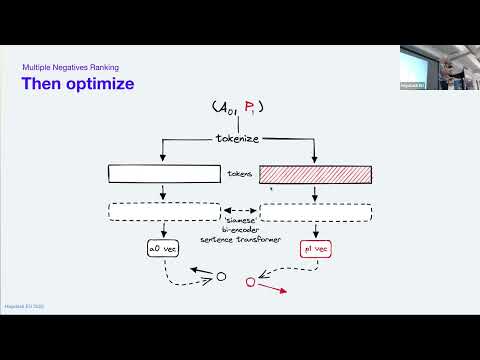Description:
Save Big on Coursera Plus. 7,000+ courses at $160 off. Limited Time Only!
Grab it
Explore fine-tuning techniques for vector search in this 36-minute conference talk from Haystack EU 2022. Delve into the challenges of building effective embedding models for domain-specific applications. Learn about popular fine-tuning methods for semantic search and QA, including MSE-loss, MNR-loss, multilingual knowledge distillation, TSDAE, AugSBERT, GenQ, and GPL. Understand when and how to apply these techniques based on available data and use cases. Gain insights from James Briggs, a Staff Developer Advocate at Pinecone and freelance ML Engineer, as he shares his expertise in NLP and vector search. Discover strategies for handling low-resource scenarios, unstructured text, and data augmentation techniques to improve your embedding models.

Fine-tuning Methods for Vector Search in Semantic Search and QA Applications
Add to list